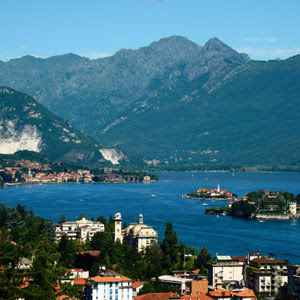A place with palm trees and much vaunted 2300 hours of sunshine a year, Locarno has attracted northern tourists to its warm all the time, Mediterranean-style( decorating has its roots in Spain, Greece and Italy) setting since the late 19th century.
History and the root of gets name of Locarno
"Locarno Pact 1925, concluded at a conference held at Locarno, Switzerland, by representatives of Great Britain, France, Germany, Italy, Belgium, Czechoslovakia, and Poland.
The request of Gustav Stresemann for a mutual guarantee of the Rhineland met with the approval of Aristide Briand ; under the leadership of Briand, Stresemann, and Austen Chamberlain , a series of treaties of mutual guarantee and arbitration were signed. In the major treaty the powers individually and collectively guaranteed the common boundaries of Belgium, France, and Germany as specified in the Treaty of Versailles of 1919.
Germany signed treaties with Poland and Czechoslovakia, agreeing to change the eastern borders of Germany by arbitration only. Germany also signed arbitration treaties with France and Belgium, and mutual defense pacts against possible German aggression were concluded between France and Poland and France and Czechoslovakia.
As an adjunct, Germany was promised entry into the League of Nations. The "spirit of Locarno" symbolized hopes for an era of international peace and goodwill. In 1936, denouncing the Locarno Pact, Hitler remilitarized the Rhineland."
Source: http://www.encyclopedia.com/topic/Locarno_Pact.aspx
Locarno is a picturesque city, offering the visitors a chance to rest and renew their spirit in its many piazzas and outdoor cafes.
Madonna del Sasso church
Most striking of all Locarno's sights is the Franciscan Santuario della Madonna del Sasso church, an impressive ochre vision floating above the town on a wooded crag (sasso means rock) and consecrated in 1487 on the spot where, seven years earlier, the Virgin had appeared to Brother Bartholomeo da Ivrea from the San Francesco monastery in the town.
The twenty-minute walk up through the lush ravine of the Torrente Ramogno and past a handful of decaying shrines, is atmospheric enough in itself; or you could take the half-hourly funicular from just west of the station to Ticino's greatest photo-op, looking down through the palms to the sunlit arcaded main front of the church and glittering blue lake behind.
The church of Madonna del Sasso can be reached by road, the Via ai Monti della Trinità, or by a cable railway departing from Via Ramogna near the Locarno train station.
Castello Visconteo
Castello Visconteo on the edge of the old town was built in the 12th century, probably as the residence of a Captain Orelli, who remained true to the Emperor. In 1260, it fell into the hands of the Ghibellines. In 1342 the Visconti of Milan, for whom it is now named, attacked the castle from both the land and the lake side and took it. It first came into the hands of the Eidgenossen in 1503. Today, only a fifth of the original structure remains. Most of that dates from the 15th and 16th centuries. Only the foundation remains from the original structure.
It features various halls with richly inlayed ceilings and a beautiful XVth century inner court. As well as an archaeological museum, this castle can nowadays be rented in its entirety for private events, including the hosting of meetings, conferences, receptions and gala dinners, enchanting the guests in the magical medieval atmosphere.
Val Verzasca
Val Verzasca is just a few kilometers away from Locarno, it offers some of the wildest hiking in Switzerland because of very reduced infrastructure. The most famous hike, a 6-day Via Alta, is especially recommended but if only have a day, or even half a day, can still find an exciting hike, either along the valley, or by climbing up to the peaks.

And also the Bungy Jumping at Verzasca Dam
Source: http://www.trekking.ch/eng/007.asp
The secret and mystical alleys
Check out the very many alleys that connect the main roads.
Lake Maggiore
Lake Maggiore is the most westerly of the three great prealpine lakes of Italy, it extends for about 70 km between Locarno and Arona.
"I walked through the drizzle along the wonderful promenade to the dock from which the boats depart for all of the ports along the beautiful Lago Maggiore. The view from the water gives one a completely different perspective of the region. While a drizzly day leaves low, whispy clouds hanging on the hillsides and ruins plans to take one of the cogwheel trains or gondolas to the top of the mountain, it offers a beautiful view of the little historic towns and villages along the lake." (An Author describe his experienced with words.)
Here another views of Locarno Switzerland:



































